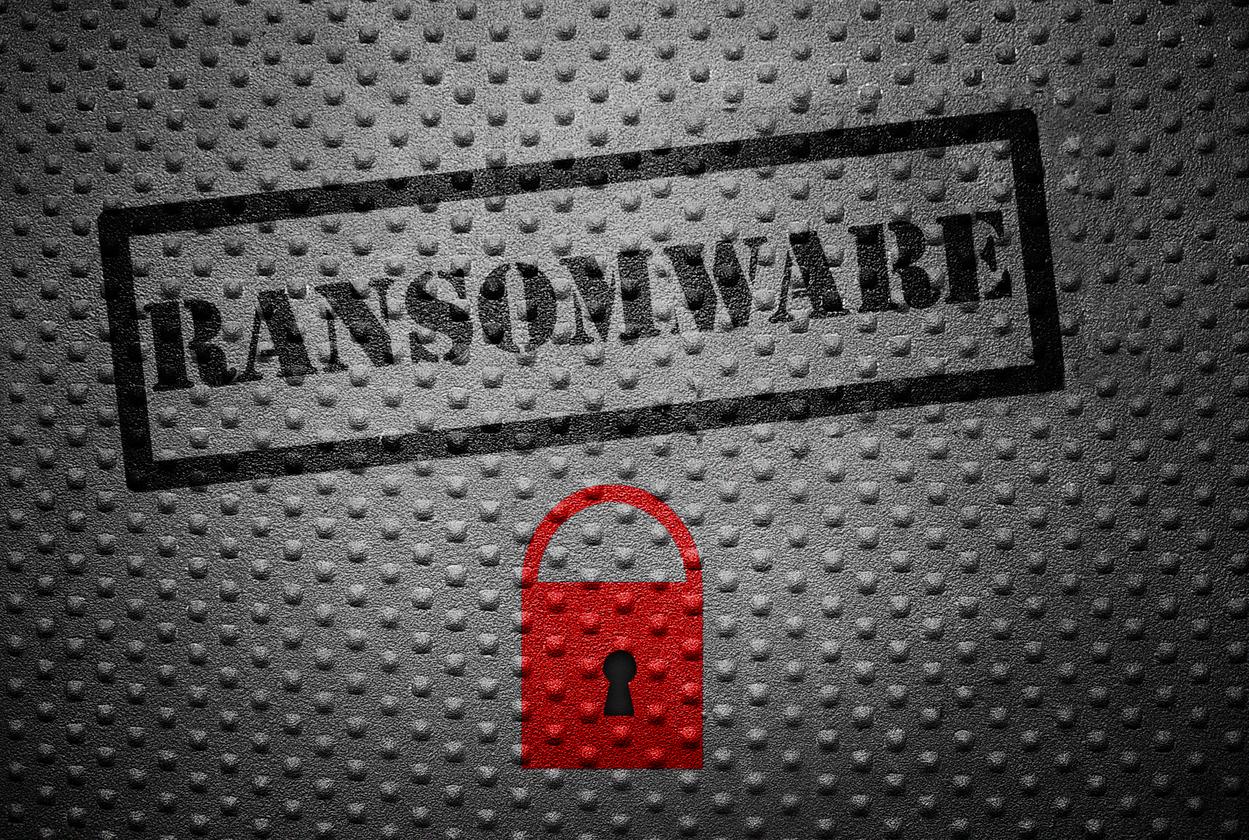Double extortion ransomware is one of the most dangerous and effective types of cyberattacks on the rise today. It is a form of malware that encrypts sensitive data on a victim’s computer or network and then demands payment from the victim in order to decrypt the data. The difference between double extortion ransomware and traditional ransomware is that double extortion includes an additional threat – stolen, sensitive data. This stolen data puts victims in an even more precarious situation, as they must pay not only to regain access to their own data but also to prevent it from being released publicly.
The goal of double extortion ransomware is to give attackers additional leverage over victims, which increases their chances of getting paid. To do this, attackers will often first exfiltrate sensitive information such as customer records or financial documents before encrypting the files. If a victim doesn’t pay, the attacker will threaten to release this information publicly, potentially damaging their reputation and bottom line.
In many cases, attackers have been known to carry out “double extortion” attacks on multiple targets simultaneously. This allows them to maximize their profits while minimizing the effort involved in each attack. For example, they might send out phishing emails containing malicious links or attachments that can infect multiple victims at once with malware. Once installed, this malware will scan for sensitive information and exfiltrate it before encrypting it – allowing attackers to launch multiple simultaneous attacks without having to write individual code for each one.
Organizations should take steps now to protect themselves from double extortion ransomware attacks by taking proactive measures such as backing up all important data regularly, enabling two-factor authentication for all accounts and devices, training employees about cybersecurity best practices, using antivirus software, and deploying security tools like intrusion detection systems (IDS) or firewall protection systems (FPS). Taking these steps can help reduce the risk of an attack by making it more difficult for attackers to gain access in the first place and giving organizations more options if they do become victimized by double extortion ransomware.

Understanding Double Extortion in Ransomware
Double extortion in ransomware is a type of cyberattack where threat actors not only encrypt a victim’s data but also exfiltrate or steal sensitive information such as account passwords or financial details. This gives the criminal additional leverage to extort money out of the victim. In most cases, victims are forced to pay a ransom to regain access to their data and prevent stolen information from being released publicly. To make matters worse, victims may also be subjected to ongoing attacks and threats until they pay the ransom or take measures to secure their data.
Understanding Double and Triple Extortion Ransomware
Double extortion ransomware is a type of malicious software that encrypts a victim’s data and demands a ransom payment in exchange for the decryption key. The double extortion variant adds an additional layer of pressure by threatening to release the encrypted data publicly if the ransom is not paid. This means that not only does the victim potentially lose access to their data, but their sensitive information is also exposed to the public, which can lead to further damage and embarrassment. Triple extortion ransomware takes this concept one step further; it not only threatens to release the data, but it adds another layer of pressure by threatening additional consequences such as website defacement or distributed denial-of-service (DDoS) attacks against the victim’s systems or services.
Difference Between Extortion and Ransomware
The main difference between extortion and ransomware is the way in which they are used to target a business. Ransomware attacks involve malicious software that encrypts a company’s data, restricting access unless a ransom is paid. Extortion, on the other hand, involves threats to publicly release sensitive information or documents if certain demands are not met. This can put more pressure on a business as the public release of sensitive information could have lasting repercussions for its reputation. Additionally, ransomware targets systems directly, while extortion targets individuals or organizations.
Types of Ransomware
Crypto-ransomware is the most common type of ransomware, and it works by encrypting files on your computer or network. Once encryption is complete, a ransom demand is issued that requires payment in order to decrypt the files and gain access to them. Crypto-ransomware can be spread through malicious emails, websites, downloads, and other online resources.
Locker ransomware operates differently than crypto-ransomware. This type of ransomware locks users out of their systems or devices by denying them access to their accounts. In some cases, the attackers may even delete important system files or corrupt data stored in the user’s account. Locker ransomware is usually spread through malicious emails, downloads, and other online resources.
The Impact of Triple Extortion Ransomware
Triple extortion ransomware is a type of malicious software that threatens to not only encrypt the data of a compromised organization but also to leak it to the public unless a ransom is paid. This type of ransomware has become increasingly popular in recent years, as attackers know that organizations are more likely to pay the ransom if there is a risk of their sensitive information being exposed. The attackers will typically demand payment from both the initially compromised company and those who may be affected by the data breach. Once payment is received, the attackers will usually release an encryption key allowing the data to be decrypted.
The Dangers of Quadruple Extortion Ransomware
Quadruple extortion ransomware is a form of cyberattack where the malicious actors not only encrypt the victim’s data but also threaten to leak or destroy it if their demands are not met. In addition, they may demand payment from victims to decrypt the data and prevent its destruction. The attackers will often publish stolen data as a way of proving that they have obtained it, and as a way of pressuring victims into paying the ransom. This makes quadruple extortion ransomware an especially dangerous form of attack, since victims may be forced to pay an exorbitant ransom or risk having their confidential information made public or destroyed.
The Most Severe Type of Ransomware
The most severe type of ransomware is called wiper malware. Unlike other types of ransomware, wiper malware does not encrypt files. Instead, it destroys or corrupts them, making them impossible to recover. Wiper malware is usually distributed as part of a targeted attack against a specific organization or individual. It often uses strong encryption algorithms and a sophisticated file deletion routine to ensure that the targeted files are completely destroyed. Examples of wiper malware include Shamoon, NotPetya, and Bad Rabbit. These types of ransomware can be especially difficult to detect and recover from, as they do not leave any trace of their infection behind.
Types of Cyber Attacks
1. Malware is a type of malicious software designed to gain access to and damage a computer system without the user’s consent. It can be used to steal sensitive information, disrupt operations, and cause financial loss. Examples include viruses, worms, Trojans, and spyware.
2. Ransomware is a type of malware that encrypts files on an infected computer and demands payment in exchange for unlocking them. Attackers often use ransomware to demand money from victims in exchange for access to their data or systems.
3. Distributed denial of service (DDoS) attacks are attempts by hackers to overwhelm a website or network with so much traffic that it becomes inaccessible. Attackers use networks of computers they have compromised with malware (known as “botnets”) to send large amounts of data requests to the target system, making it unable to respond to legitimate requests.

Source: cyware.com
Types of Ransomware
There are four types of ransomware that can be used to target computer systems: Crypto Ransomware or Encryptors, Lockers, Scareware, and Doxware or Leakware.
Crypto Ransomware or Encryptors is one of the most well-known and damaging variants. This type of ransomware encrypts data on a computer system and demands payment for a key that can decrypt it. Without the key, the encrypted data remains inaccessible.
Lockers are another type of ransomware that completely locks users out of their system so that their files and applications remain inaccessible until a ransom is paid. In some cases, the user also loses control over their operating system and may not be able to access any programs or settings.
Scareware is a type of ransomware that uses social engineering techniques such as pop-up messages to frighten users into paying a ransom without actually encrypting data on their system. It typically presents users with false information about viruses or other malicious threats in an attempt to convince them to pay up.
Finally, Doxware or Leakware is another form of ransomware that threatens to publish confidential information unless a ransom is paid. This type of attack often targets companies with sensitive data and can lead to significant reputational damage as well as financial losses if confidential information is made public.
Is Ransomware an Act of Extortion?
Yes, ransomware is considered extortion. Extortion is the practice of obtaining something of value, usually money or property, by threatening or placing another person in fear. Ransomware does this by encrypting data and systems, making them inaccessible until payment is made or other demands are met. This type of cyberattack has become increasingly common as sophisticated hacking tools become more widely available and malicious actors attempt to extract money from victims. Victims may also be subject to additional threats if they do not comply with the attackers’ demands.
Conclusion
In conclusion, double extortion ransomware is a malicious type of cyber attack that not only encrypts the victim’s data but also exfiltrates sensitive data from their system. This form of ransomware can be extremely damaging to businesses as the stolen data can be used as leverage to demand higher ransom payments. Additionally, by threatening to publicly release the collected information, the attackers are able to create further pressure on victims to comply with their demands. Triple extortion ransomware takes this tactic one step further, adding another layer of pressure on victims. As such, it is important for businesses and individuals alike to take steps to protect themselves from potential cyber-attacks and ensure their sensitive data remains secure.








